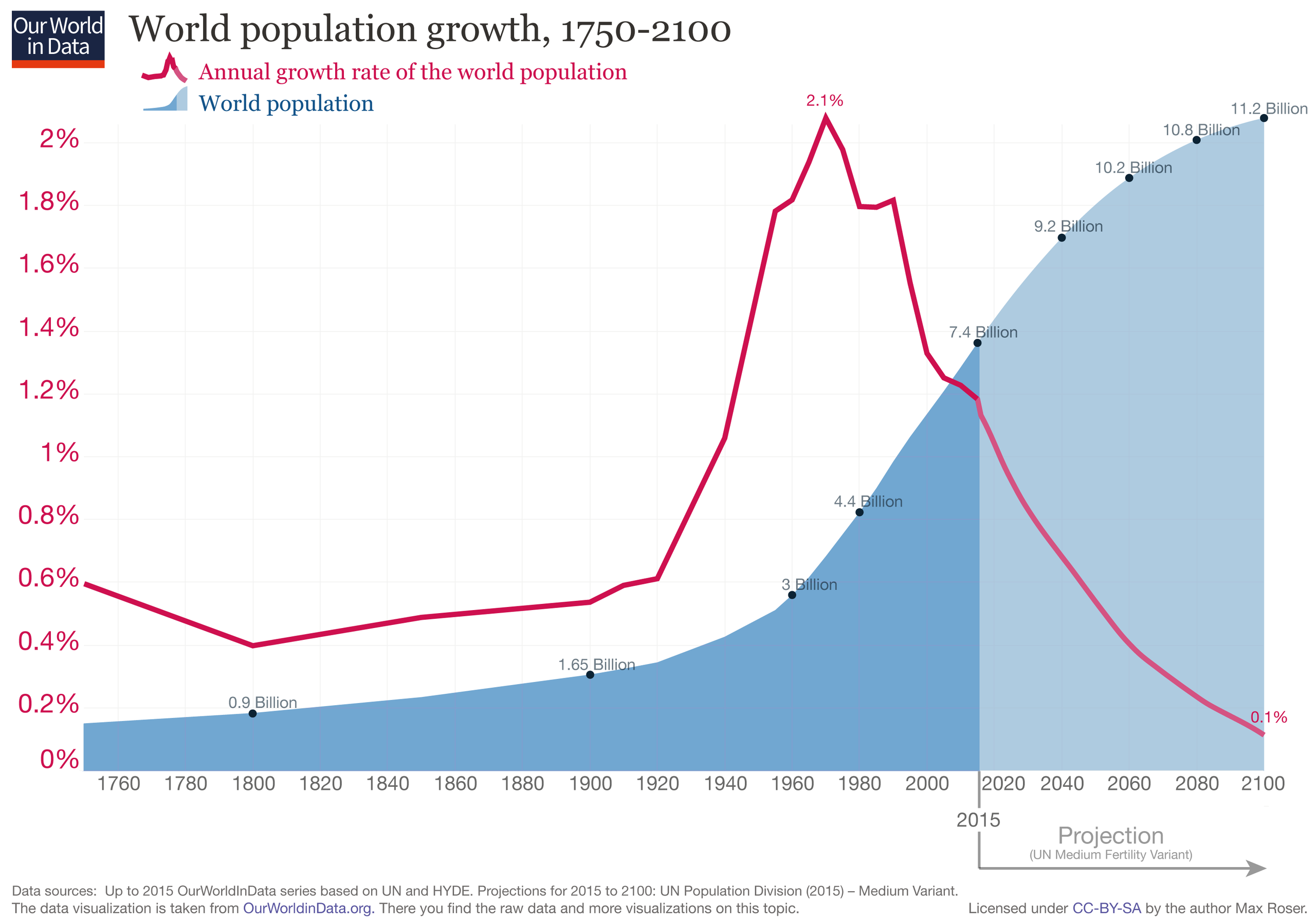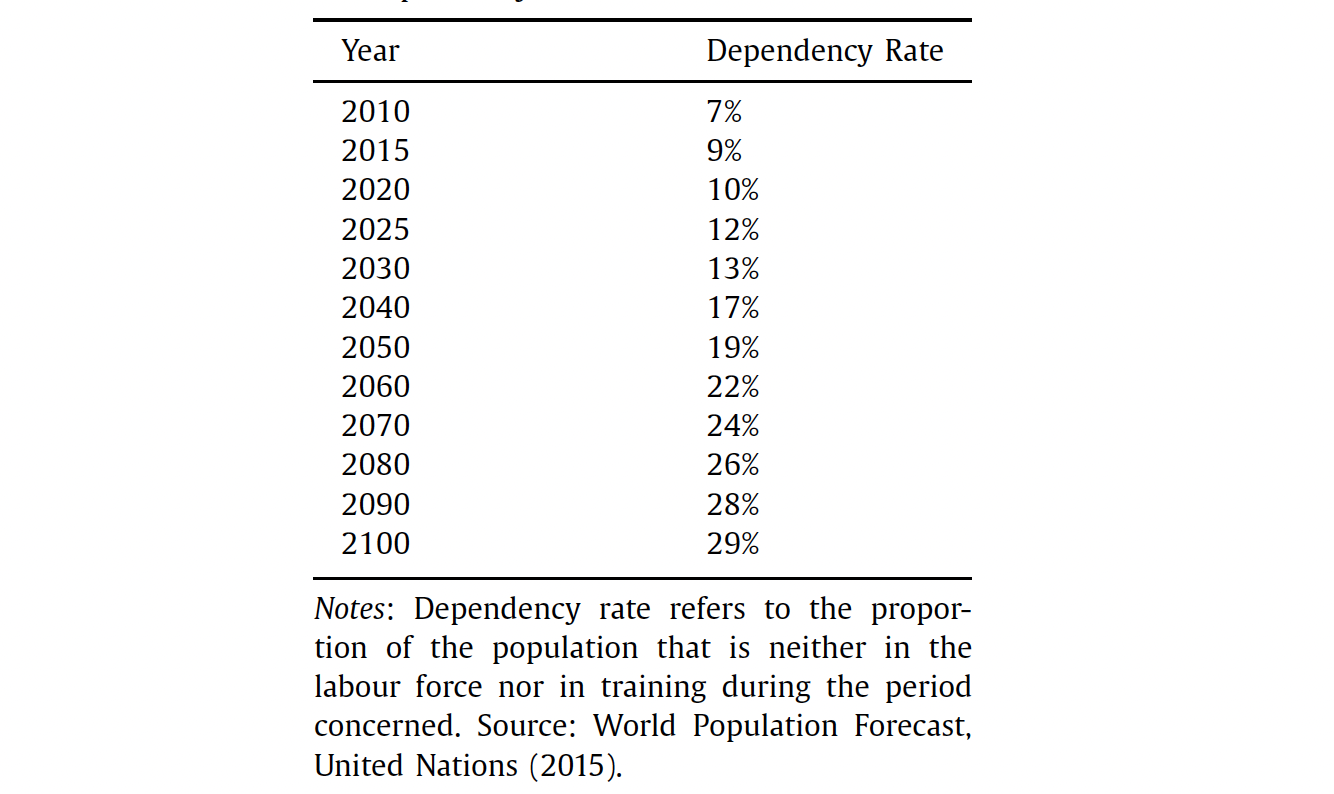That's not the future we were promised.
From VoxEU, May 29:
In the coming century, the global economy will experience an unprecedented convergence of two trends, as the world’s population reaches its peak while simultaneously approaching near-zero levels of growth – a combination that will invert both the population pyramid and dependency rates. This column examines this transformation within the context of changes to the global economy’s fundamental methods of production. High levels of dependency and the relative scarcity of labour may induce a shift in the methods of production from labour-based R&D back to a reliance on natural resources.
The global economy is going to pass through a severe population problem over the coming century, resulting from the simultaneous peak in global population levels with near-zero population growth (Roser et al. 2013, Giovanni and Tena Junguito 2023). This conflation of world firsts is seen in Figure 1, which shows that global population is projected to reach a peak of approximately 11 billion individuals in the year 2100, at the same time that population growth is forecast to be moving asymptotically to zero.
Figure 1 World population growth, 1750-2100

The important consequence of this coincidence is the comparative inversion of the population pyramid, as the incoming cohorts of young people progressively diminish relative to the size of previous cohorts. The impact of the inversion is captured in the concept of an increasing ‘dependency rate’: the proportion of the population over 70 years of age relative to the working population. Over the past half-century, this proportion of dependents to workers stayed below 10%; in future, it will grow to 30%.
This is seen in Table 1, in which the UN projects global dependency rates rising to previously unseen levels (UN 2015). It is remarkable how stable the dependency rate has been over the past half-century, fostered by ongoing growth in population in many parts of the world. The precipitous decline in global population growth since the 1960s reverses this outcome, with sub-Saharan Africa and South Asia the only regions of the world forecast to avoid rapidly declining population growth rates in the near future. In certain parts of the more developed world, the dependency rate is forecast to approach 40–50% (Aidt and Swanson 2020). What does this change portend for the world’s resources? What are the important changes in store for the world economy?
Table 1 UN dependency rate forecasts

In a set of recent papers, we and our co-authors have been investigating the potential consequences of this demographic inversion in regard to its impact on global resource scarcity, using the case study of land scarcity for agriculture as our context (Lanz et al. 2017, Naso et al. 2020, Naso et al. 2022). Malthus of course hypothesised in the 19th century that demographic factors would drive future food scarcity. More recent hypothesises suggest that the silver-lining of this reversal in population growth might be a new era of reduced pressure on global resources. In our series of papers, we investigate this hypothesis in the context of an integrated assessment model combining and integrating the growth in land use, food consumption, population growth, technology, and standard economic production. We find that there is good reason to be concerned about how population growth interacts with resource pressure.
Our MAVA model builds on the endogenous growth models of Galor (2011), and integrated assessment models such as Nordhaus and Boyer (2003), but focuses on issues of food and resource (land) use together with those of population, production, and technology. In the MAVA model, the use of land, labour, and capital is necessary to produce the food by which the population is sustained; the resulting labour pool is then allocated across six sectors (agriculture, production, education, land maintenance, and R&D). The combination of these six sectors produces an integrated production model that is then fit to observed variables over a 50-year timespan, 1960–2010. The model’s fit to historical data (see Figure 2) demonstrates that all of these observables have moved together relatively smoothly over these five decades....
....MUCH MORE
Bringing to mind July 2022's "Sri Lanka As A Testing Ground For Some Of The WEF's Ideas":
Here's an interesting paragraph:
That's from "How a circular economy could help tackle Sri Lanka's economic crisis", World Economic Forum, July 5, 2022.